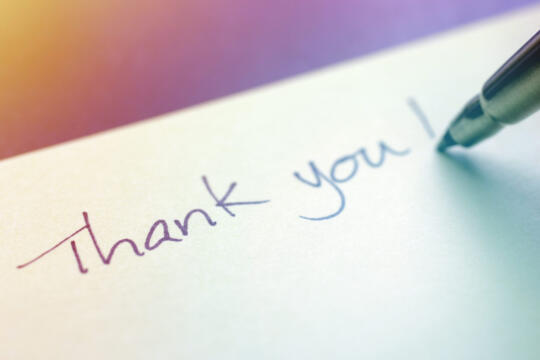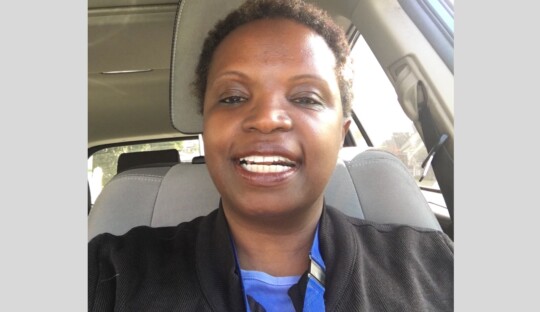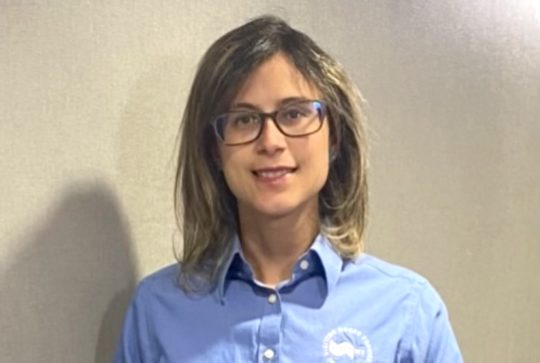Frontline VNSNY Exclusive: VNSNY’s Sasha Arana Shares Her Experience Delivering Relief Supplies in Puerto Rico
Sasha Arana, a Customer Service Representative in VNSNY’s Customer Call Center, recently spent a week doing volunteer relief work in Puerto Rico, where most of her family lives. Following is her report from the island, as told to our writer by phone. Through the selfless work being done in Puerto Rico by Sasha and her VNSNY colleague, Alicia Schwartz, as well as the efforts of VNSNY staff here in New York to collect supplies for hurricane victims, our employees are truly walking in the footsteps of Lillian Wald—going above and beyond to serve the community and help those in need.

I’ve been working with the Puerto Rican Family Institute, a non-profit organization in New York that has been coordinating its efforts with United for Puerto Rico, a relief organization started by the Puerto Rican governor’s wife to help in the hurricane recovery. I had been gathering donated supplies from my VNSNY colleagues in the Customer Service department and dropping them off at the Institute. But I also wanted to do something myself for the people there. My whole family is in Puerto Rico—my parents, my grandparents, my younger sister, and aunts and uncles. I was getting desperate because I hadn’t heard from them for a week after the hurricane struck. Finally I was able to get through to them by phone, and I told them I was coming down for a week to volunteer. One of my family members works for JetBlue, so they were able to put me on a flight there.
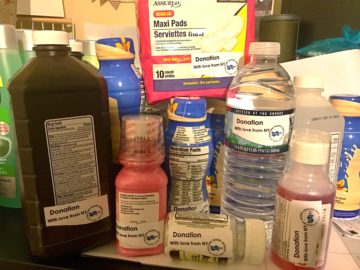
I brought a 100-pound box of supplies with me on the plane from my VNSNY co-workers—first aid supplies, antibiotics, soap, sanitizer, toothbrushes and toothpaste, things like that. I checked on my family the first day I got there—my parents live in San Juan and are without power, but they’re managing. My grandparents live outside San Juan in an area that had a lot of damage from flooding, and they lost everything, but they are personally okay as well.
For the next five days, I was busy delivering supplies all around the island through the United for Puerto Rico organization. All of the supplies coming into the port of San Juan are being collected for distribution at the Roberto Clemente Coliseum. FEMA and the military are supervising the effort, and it’s very well organized. There is a big board on the wall listing the supplies that had been requested by the various mayors of the different towns across Puerto Rico. There were about 50 people in our own volunteer group. Some sorted the supplies, others helped put them in boxes, and then some of us would bring the supplies to the towns. We got there every day at 6:30. We had a jeep that a friend of mine had loaned us, and when all the boxes of supplies were loaded on the jeep, we would head out with a list of the towns where we were taking them. I traveled with another volunteer like myself, and two doctors.
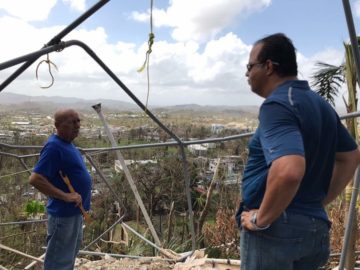
Although the situation was not easy in the San Juan area, as we traveled around the center of the island, I could see that things were much worse there. It’s a complete disaster, because the houses in those areas are not built from cement like those in the metropolitan area. They are all made of wood and zinc, and aren’t built to survive even a category three hurricane, let alone a category five like Maria, so there’s a lot of devastation. And because the highways going to most of those towns have collapsed, it’s very difficult to get to them to bring food and water. We had to wade across rivers in some places, and even had to go by military helicopter to one town.
On our first day, we were given a list of government-run nursing homes that needed medications delivered to them. The residents couldn’t leave the upper floors, because the power was out and the elevators weren’t working, so we had to bring everything up to them—blood pressure and diabetes drugs, aspirin, and other medications. We also brought in cases of Pedialite, an electrolyte drink that is usually given to small children, to keep the elderly residents from becoming dehydrated.

In the days that followed we visited many communities across four different municipalities, bringing the supplies that the towns had requested for specific needs—food, water, supplies for babies, certain medications. People were always very happy to see us. I think most of them are still in shock—they can’t believe they’re living like this, because they’ve never experienced this kind of devastation from a hurricane, and they are very happy just to get food and water. There’s a lot of trash and dead animals lying in the street, so the water in the river and springs is not clean at all, and people don’t have fuel to boil the water and sanitize it. In some of the towns we went to, they hadn’t had any food or water for several days, so they were starving. In certain communities, the population is mostly old people—your grandma or grandpa. They cannot find water, they cannot find food, they cannot find anything. It’s terrible.
Because we had to travel to a number of towns of each day, we couldn’t stay and chat a lot with the people living there. We were working mostly with our contacts in the town, and since most of my fellow volunteers speak English only and Spanish is my native language, I was the person who translated. When we dropped off the water and food and other supplies in each town, the contacts there would tell us what else they needed, or explain that was an older person who couldn’t come to the supply drop-off and needed insulin brought to her—things like that. If we came into a town and someone was sick or needed insulin, the doctors traveling with us took care of it. Sometimes someone would need to be taken to the hospital, so we would put them in the jeep and bring them to the hospital, and I would ride in the luggage compartment!
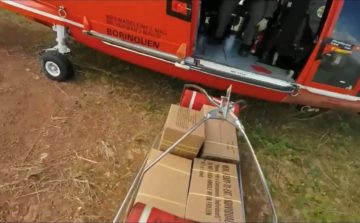
In most of the towns we traveled to, the relief supplies were distributed at community centers and people would line up to get the supplies and the hot food that we brought. But in the more isolated towns, things were less organized, and people would come running up to get supplies when they us coming. Sometimes there would be more and more people arriving while we were there, so the deliveries took longer than expected. Some days we would arrive back in San Juan at eight or nine o’clock in the evening, but other days we didn’t get back until after midnight. The hardest place to reach was Utuado, which is a very complicated town to get to, because the highway to get there had collapsed and there are no rivers, just mountains and mountains. So we rode in a helicopter there. I was excited, because it was my first time in a helicopter, but it was also very sad, because I could see everything that had been destroyed, and I could see all the SOS signs that people had put in the streets in different ways, asking for help.
The other difficult thing was knowing that even though we were bringing supplies, in a few days someone will have to bring more, because you can only fill a truck or helicopter with so many supplies. It was hard work, and at the end of the week I was very tired. I wish I could have stayed longer in Puerto Rico, because there is so much more that needs to be done, but I was very happy that I was able to be there for a week. I’m hoping to go back again around the holidays. Puerto Rico needs help for more than a few weeks or months. It’s probably going to take at least a year to put us on our feet again.
